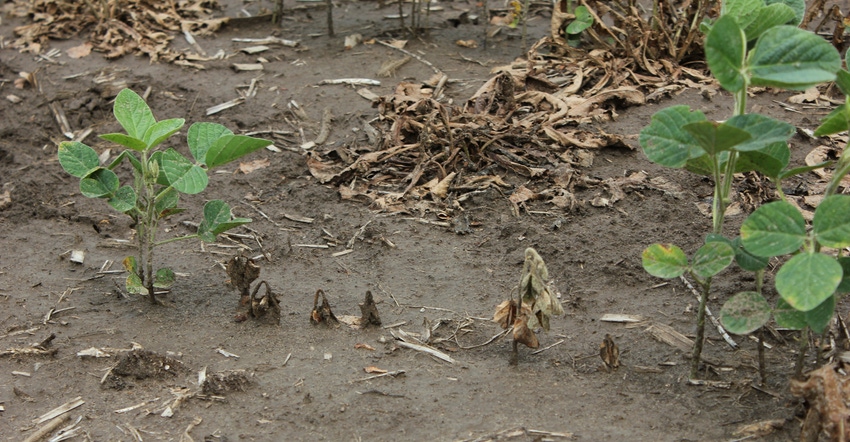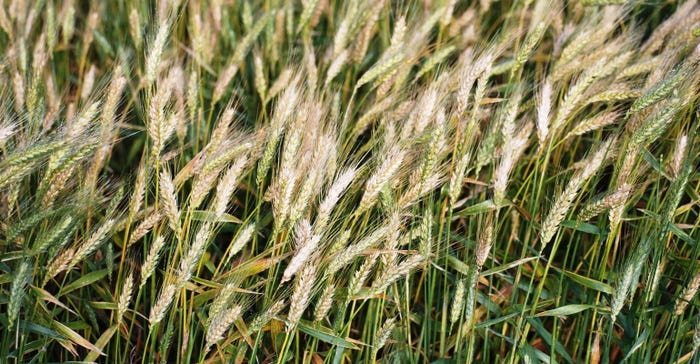
Persistent rains in early spring may result in reduced yields for corn, soybeans and wheat.
Kaitlyn Bissonnette, University of Missouri Extension plant pathologist, says farmers faced seedling and root-rotting diseases in many Missouri fields this growing season. In a recent newsletter, she reported that the most common perpetrator is from the Pythium species, and it did not discriminate based on the type of crop. She’s had reports of infection of the roots of corn, soybeans and wheat in fields, especially in the northern half of the state.
Visible crop damage
“Infection by Pythium species favors cool, wet weather, which was present throughout Missouri for much of April and May,” Bissonnette explains. “As soil temperatures increase, infection will slow down and eventually cease.”
Pythium symptoms in cornfields include dark lesions that cause the root or mesocotyl to shrivel. It may result in the root becoming rotted while the inner part, or stele, remains white and intact. According to University of Illinois Extension, these infected seedlings tend to die either before or after emerging from the soil.
For soybeans, farmers can identify Pythium infections as a soft, brownish-colored, rotting tissue. It can attack at the seeds or the seedlings just before emergence, but most often when they are under wet conditions.
Bissonnette says some fields across Missouri are showing these signs and symptoms. “Of major concern are fields where stand loss is evident as a result of seedling diseases in corn and soybean,” she says. “These fields may have seed that is rotting in the ground, or have young plants that have emerged but have begun to die back after several weeks of slow growth.”
And Bissonnette warns that prolonged exposure to cool, moist soils, even with a seed treatment, can still result in seedling disease — especially when the disease pressure is high. She recommends farmers look at the MU guide to replant decisions to determine if the stand loss justifies replanting corn or soybeans.
Wheat disease problems
Winter wheat production also has not been left out of the game this year when it comes to root-rotting diseases, Bissonnette says.
She found winter wheat fields showing symptoms of stunting and white heads in patches or in strips across the field. The roots were infected by three species — Pythium, Rhizoctonia and Fusarium. These diseases, she points out, set in during grain fill in many areas. Ultimately, that will affect wheat yields.

COLOR VARIANCE: A distinct color pattern across some wheat fields can be a sign of root rot. This year, farmers experienced some Fusarium disease pressure, which can result in blank heads or early maturing plants in patches.
As temperatures warm and soils dry, infection levels will decrease, Bissonnette notes. “Additionally, as these diseases are in the soil, movement into other areas of the field is unlikely prior to the harvesttime,” she says. “Field assessments should rely on percentage of acreage affected and severity of root-rot symptoms.”
Bissonnette encourages farmers that suspect seedling diseases in soybean or cornfields, or root rots in a wheat field, to verify by contacting the MU Plant Diagnostic Clinic at [email protected] or 573-882-3019.
About the Author(s)
You May Also Like






